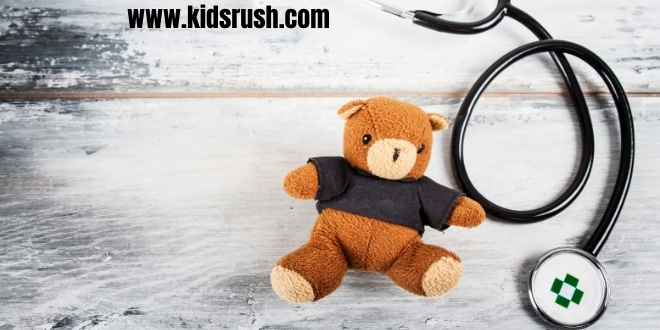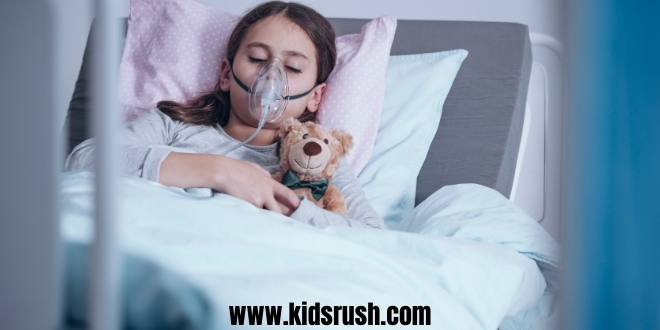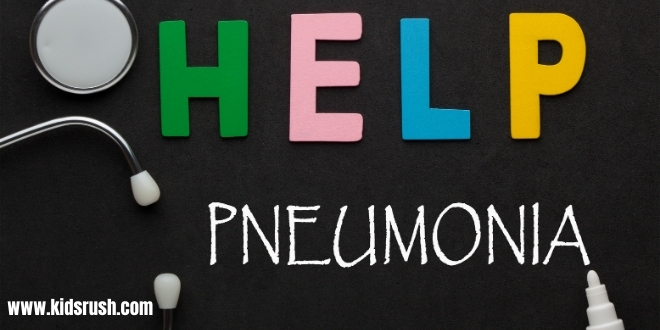Symptoms of pneumonia in children:
Pneumonia is a disease that occurs when the lungs are infected, which can also be called “lower respiratory tract infection” because it occurs deep in the lungs, with children being the group most affected by this disease. Most cases of pneumonia in children are usually caused by the entry of a virus into the body, besides pneumonia can also appear after having had a cold. If you think that your child may be developing this disease, at kidsrush.com we want to help you clear your doubts by explaining the symptoms of pneumonia in children and, in this way, you go to your regular doctor as soon as possible.
We recommend you to read another article on kidsrush.com which is about Walking Pneumonia in Kids: What You Need To Know?
Signs and symptoms of pneumonia in children

Pneumonia appears frequently in children when they have had an infection of the upper respiratory tract, that is, in the nose and throat. Symptoms that your child is suffering from pneumonia usually begin 2 to 3 days after having a cold. Although the symptoms can vary both by the age of the child and by the cause that has caused pneumonia, the following symptoms usually appear:
- Nasal congestion and shortness of breath.
- Chest pain.
- Abdominal pain from the force of the child when coughing.
- Rapid breathing, this being sometimes the only clear symptom of pneumonia in children.
- Breathing with a hissing sound.
- Vomiting
- Fever and chills
- Lips with a blue tone in extreme cases.
- Loss of appetite
- Fatigue.
The time that can pass from when the child was exposed to the bacteria or virus until he begins to feel sick is highly variable since it can last between 18-72 hours and up to 4 to 6 days. It is necessary that when you begin to notice any of these symptoms in the child, you go to the specialist to proceed to diagnose it and prescribe the most appropriate treatment.
Read Also: Obsessive-Compulsive Disorder in Children: What is it and how to treat it?
Types of pneumonia in children

Based on the symptoms a child may have, we can tell what caused pneumonia. Pneumonia in a child that has been caused by some bacteria is characterized in that the child falls ill very quickly and the symptoms of this type of pneumonia are a very high and sudden fever and rapid breathing that appears unusually.
Pneumonia that has been caused by a virus is distinguished from the previous one because the child will gradually have the symptoms that we have explained and are usually less severe. The common symptom that children with pneumonia have is wheezing.
There is also another type of pneumonia that is caused by mycoplasma and is often known as atypical pneumonia. This typically occurs more in older children and the symptoms to recognize is sore throat and headache.
Lastly, babies and newborns can get pneumonia caused by chlamydia. In this case, the symptoms are usually the following:
- Conjunctivitis.
- Prolonged, whooping cough.
- The bluish tone of the skin due to a lack of air.
- fever.
Treatment for pneumonia in children

After the doctor diagnoses your child with pneumonia through a physical examination, he or she will prescribe the most appropriate treatment to combat the disease. Normally treatments for pneumonia usually have a duration ranging between one and two weeks.
Most cases of pneumonia in children are usually treated with antibiotic medicine given at home to the child with pneumonia. However, for more severe cases of pneumonia where the child has symptoms such as whooping cough, very high fever, and/or trouble breathing, treatment will be received in a hospital.
This treatment may include intravenous antibiotic medications, that is, through a needle through the vein; and also, if necessary, it can include respiratory therapy, that is, treatments so that the child can breathe.
Discover: Symptoms and Treatment of Heart failure Problems in Children
Child care at home
If you have already seen the specialist with the child with pneumonia and they have already prescribed treatment, it is recommended that you follow these tips for the complete recovery of your child:
- If the child has been prescribed antibiotics, you must complete the treatment even if he feels better.
- At first, normally, the child does not feel like eating very much, so you should try to keep him hydrated with liquids such as juices or water.
- You should avoid places where there is smoke as it will irritate the child’s lungs.
- You also have to be aware that he does not have a high fever.
- As your child begins to get better, he will likely start to cough more, because he has to expel mucus. Do not panic.
This article is merely informative, at kidsrush.com we do not have the power to prescribe any medical treatment or make any type of diagnosis. We invite you to see a doctor in the case of presenting any type of condition or discomfort.
